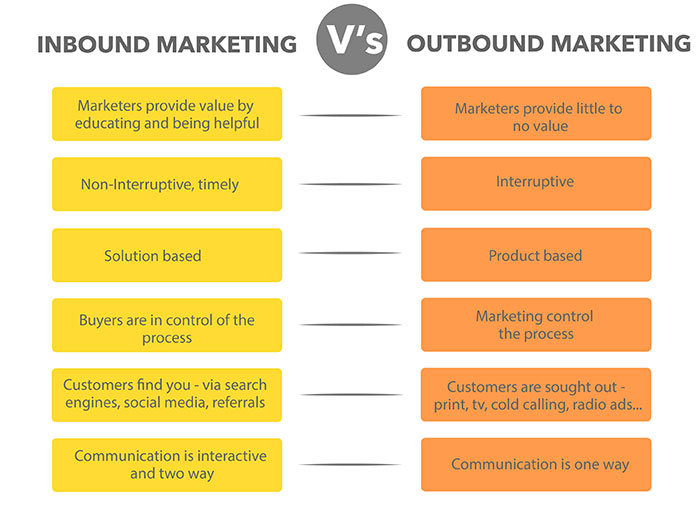Marketing Metrics: How to Track Your Online Course’s Marketing KPIs
Marketing metrics are the metrics that measure whether or not your outreach strategy is paying off.
After all, if you put together a whole marketing strategy for your online course, dedicate yourself, invest time updating blog and social networks, you need to know if your efforts are working or if you need to try something else.

7 Marketing Metrics You Must Follow
When it comes to defining and tracking performance indicators (KPIs), many professionals end up falling into standard analyzes that do not fit the specific needs of their business.
Or they end up with that common analysis, while there are several other marketing metrics you can follow to run a more successful campaign.
By tracking the right marketing KPIs, your business can make adjustments to various strategies and budgets.
Otherwise, you can make decisions based on misleading information.
Check out 7 relevant marketing metrics to measure the progress of your disclosure strategy.
– Content Marketing to Sell Online Courses
1. Sales Revenue
For more accurate analysis, it is important to define all types of marketing actions being taken, from paid Google ads to weekly blog updates.
– How to reduce costs with Google Ads
These actions can usually be divided into two types: Inbound and Outbound Marketing.
To determine the revenue generated by each type of activity, you must first understand the difference between the two.
In general, we can say that while Inbound Marketing seeks to inform and attract the customer, Outbound is based on traditional direct selling through product advertising.
See the illustration below to understand it better.

You can calculate your sales revenue with Inbound Marketing using a very simple formula:
(Total sales for the year) – (Total revenue from customers acquired through inbound marketing)
It is important to understand your sales revenue to know how effective your Inbound campaign is and, if necessary, to reformulate it.
Remember that these inbound strategies focus on providing qualified content to attract the customer. This is usually done through blog posts, video tutorials, webinars, among others.
– How to Create a Blog to Promote Your Business
The same applies to your Outbound strategy. It’s no use investing in paid ads if they aren’t attracting the qualified leads you expect, for example. Or, if your conversion is low, it might be time to try other channels or other ad formats.
Determining the amount of revenue generated by each set of strategies is one of the best marketing metrics to begin measuring the effectiveness of your campaign.
2. Cost per Lead
New question: How much does it cost to acquire a customer through Inbound Marketing vs. Outbound Marketing?
To make it easy to calculate Customer Acquisition Costs (CAC), you should automate the process by integrating your marketing automation platform and CRM (Customer Relationship Management) software.
But don’t worry, especially if your business is just starting up, this calculation will be much simpler to do.
In calculating Inbound Marketing’s CAC, relevant costs include:
- Human Resources (creative and technical)
- Technology and software
- Working Time
Calculating Outbound Marketing CAC, relevant costs include:
- Advertising
- Human Resources (sales and marketing)
- Working Time
The next step is to sum all the costs that each set of actions generated in a time period and how many customers were resulting from those actions in that time.

For example, suppose your Inbound Marketing spend was $ 5,000 over a two-month period and this resulted in 10 new customers.
This would give you an average of $ 2,500 spent and 5 customers earned per month, meaning your CAC would be $ 500. From there you can see if the value found is acceptable or not.
Once you use these marketing metrics to calculate the costs associated with both strategies, you can allocate specific budgets for each campaign.
If your business is primarily using Inbound Marketing, you can look more closely at the success and profit of each activity to measure what yields the best results and deserves the most investment.
3. LTV – Lifetime Value
LTV basically consists of predicting how much money you should make on average with each customer for the time they buy from you.
You can calculate the Lifetime Value of your customers’ using the following calculation:
(Average sale per customer) x (Average number of times a customer buys per year) x (Average retention time in months or years for a typical customer)
Assuming that your average ticket is $ 150.00, the customer usually makes 3 purchases per year and their length of stay is 12 months, we have the following calculation:
150 x 3 x 12 = $ 5,400 (LTV)
A great way to increase the Lifetime Value of your customers’ is to develop campaigns that focus on your existing customers.
It’s important to maintain rapport and communication with your buyers by delivering information that interests them, letting them know about new services and products, offers or simply showing that you remember them by sending a happy birthday email.
– How to create an email marketing campaign
An email marketing campaign and a loyalty program are quite effective actions to help maintain this relationship, keeping your business alive in consumers’ memory.
– 5 Steps to Creating a Loyalty Program
4. Return On Investment (ROI)
Every business wants to see return on investment, and in fact we can say that among marketing metrics, this is the main one. After all, the goal of every business is to profit.
Calculating the return on investment for your marketing campaign is crucial in helping to gauge your monthly and annual performance.
Equally important is the ability to start planning strategies and budgets for the coming year.
The formula to make this calculation is simple:
ROI = Revenue – Investment Cost / Investment Cost
For example: Suppose you spent $ 7,000 on your marketing strategy, and you had $ 10,000 in revenue, the account is:
ROI = 10,000 – 7,000 / 7,000
ROI = 0.42
Your return in this case would be 0.42 (or 42%) on the amount invested.
Here you can again choose to calculate each set of marketing actions (Inbound and Outbound), for each activity or considering the total amount invested in marketing.
It all depends on what works best and is most relevant to your business specifically.
If you are starting sales of your online course, for example, and your outreach campaign is recent and focused mostly on Inbound Marketing, there is no need to do separate calculations.
Use marketing metrics according to the reality of your business.
5. Landing Page Conversion Rates
Your landing page is active, beautiful, follows all best practices, but have you ever stopped to consider if it is actually converting?
The landing page is your sales page, so if it does not generate leads, it is useless, no matter how much traffic is received or how elaborate the design is.
If your landing page is getting a lot of traffic but has a low conversion rate, it’s a red flag that something is wrong and some changes need to be made.
To begin, check the basic elements, such as
- Page load time
- Copywriting
- Intuitive navigation
- Clear information about the product / service
- Quality images
If everything is right with respect to the operation of the site, do some usability changes and make tests A / B to see if the results change.
You can make the following changes to see which one has the highest conversion rate:
- Change the CTA color
- Make a better CTA text
- Make your copywriting more persuasive
- Reduce your form
- Add social evidence (testimonials, positive reviews, certificates, awards , etc).
– How to get more Reviews to sell Online Courses
6. Organic Traffic
The goal of any business using Inbound Marketing is to get most of the traffic from organic search.
High organic traffic means that people are finding your site on their own, minimizing the cost of paid advertising and increasing the relevance of your site to the consumer. After all, everyone knows that few people pass the second page of searches.
One of the most sought-after marketing metrics for entrepreneurs, it’s no surprise that organic traffic is directly related to your SEO strategy.
So be sure to monitor this number (along with your keywords) and refine your SEO strategy accordingly.
– How to Search Keywords for Your SEO Strategy
Tools like Google Analytics let you know the percentage of visitors that come to your site organically or paid.
7. Social Media Traffic (and Conversion Rates)
Many entrepreneurs often distrust the importance of social media in their marketing campaign, but over the years, the presence of companies on these channels has proven invaluable in their relationship with the public.
Marketing metrics you can use to show the importance and impact of social media on your outreach efforts include:
- Number of lead conversions generated by each social media channel
- Number of customer conversions generated through social media channel
- Traffic Percentage to Your Landing Page Associated with Social Media Channels
With so many social networks, such as Twitter, Facebook, LinkedIn, Pinterest, and Instagram, you may not have all the time in the world to effectively use all platforms.
So you have to know what converts more to determine where to focus your efforts.
Again, tools like Google Analytics let you know the percentage of visitors coming to your site from different channels, such as social media.
– 7 Ways to Increase Your Authority on Social Media
Use Marketing Metrics to Increase Your Online Course Sales

Marketing metrics have as primarily goal to create an effective disclosure campaign that can deliver results in the short and long term.
Be sure to reevaluate your results at regular intervals. As your strategy develops, new data appears and others may change, which may mean that your resources should be reallocated.
Every marketing strategy is critical to the success and growth of any business, and this applies to selling online courses.
Only through a well-structured marketing campaign will your prospective students know who you are and how you can help them.
Complete eLearning platform, Coursify.me is the ideal solution for anyone who wants to create, sell and promote courses on the internet without having to invest to start your own business.
Attending companies and professionals in more than 60 countries, Coursify.me is a dynamic and customizable Learning Management System.
– Whats is a Learning Management System
In addition, we have three options for you to decide what best suits your needs and the good news is that the Beginner Plan is free!
Visit our website, test the platform and start selling online courses right now.

